In today’s competitive education landscape, schools often face a drop in the number of enrolled students.
These declining numbers can have far-reaching consequences, impacting a school’s financial stability and reputation.
If you’ve noticed a decline in enrollment at your school, it’s crucial to identify the reasons behind this trend and take proactive steps to reverse it.
In this article, we’ll explore four key factors that may be contributing to your school’s inability to attract students.
From the absence of a strategic enrollment plan to a failure in highlighting core values and ineffective promotional strategies, we will provide practical solutions to overcome these and breathe new life into your student recruitment efforts.
Let’s start with the people responsible for managing student enrollment in your school.
- Having the Wrong People in the Wrong Places
- Not Having a Strategic Enrollment Plan
- Focusing More on Features Than Value
- Using Outbound Instead of Inbound Marketing
- Conclusion
Having the Wrong People in the Wrong Places
The root cause of declining enrollment numbers in your school often lies in having the wrong people in the wrong positions.
That’s why it’s crucial to closely examine enrollment management within your institution.
Take a moment to determine who is accountable for this critical aspect.
If an enrollment director or manager working alongside a dedicated marketing department is not part of the answer, it is time to initiate some changes.
Insufficient emphasis on enrollment management or expecting teachers to take on marketing responsibilities may be the issue.
Moreover, forcing teachers to divide their time between teaching and promotion prevents them from excelling in either area.
It’s like trying to wear multiple hats simultaneously without giving either role the attention it deserves.
Alternatively, your marketing team might not meet the required standard and isn’t able to promote your school successfully.
So, if some of these sound familiar, it’s time to do something differently.
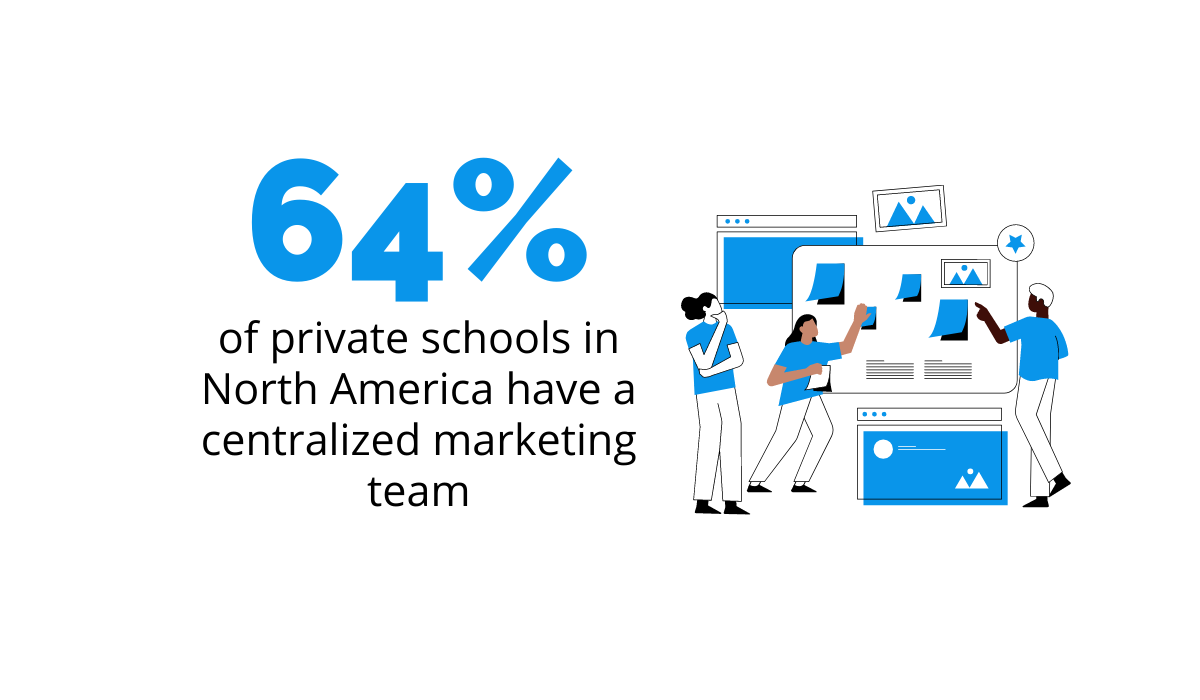
Illustration: Regpack / Data: Metric Marketing
Metric Marketing reports that 64% of private schools in North America do recognize the significance of a centralized marketing team.
They comprehend that successful enrollment depends on professionals who can convey the school’s values, mission, and captivating story to both parents and students.
Ultimately, it is these stories that truly resonate and inspire students to enroll.
There is one more factor that plays a crucial role in attracting prospective students—effective leadership.
Consider the viewpoint of a teacher on Reddit who describes a good principal as a visionary leader who upholds the school’s values and understands accountability:

Source: Reddit
Only such a dedicated individual, who understands the need for effective enrollment management and is also willing to allocate necessary resources, can create an environment that will boost student enrollment.
To summarize, having the wrong people in the wrong positions, and lacking a capable principal, a focused enrollment director, or a proficient marketing team, can impede your school’s enrollment numbers.
However, by ensuring that the right individuals fill these roles, you can transform your enrollment figures and provide an inspiring educational journey for all involved.
Not Having a Strategic Enrollment Plan
To increase enrollment numbers, having a strategic enrollment plan isn’t just an option—it’s an absolute necessity.
Without a well-crafted plan, your school’s enrollment figures are bound to suffer.
But what exactly is a strategic enrollment plan, and why is it crucial for achieving enrollment success?
Simply put, it’s a comprehensive roadmap that outlines how to attract and retain students, ensuring not only short-term gains but also your institution’s long-term enrollment and financial health.
To create an effective enrollment strategy, Enrollment Marketer offers ten actionable steps:
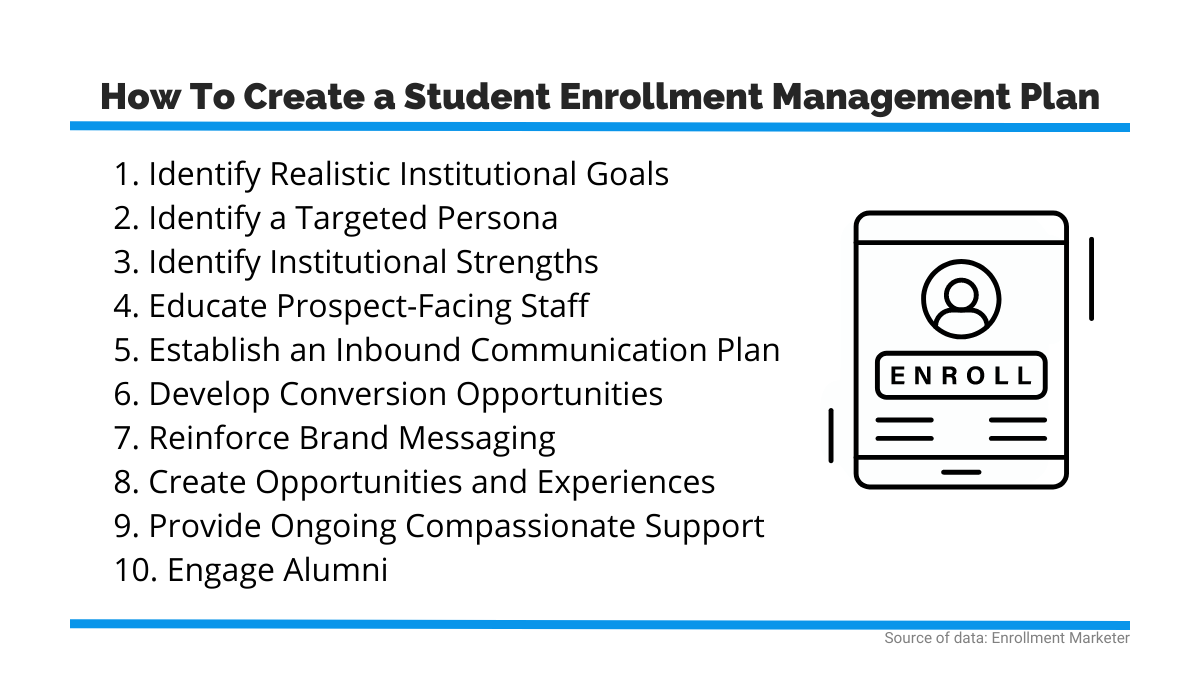
Illustration: Regpack / Data: Enrollment Marketer
Let’s dive into some of these to see how such planning can transform your enrollment outcomes.
Step one is all about setting SMART goals for your institution—goals that are Specific, Measurable, Attainable, Relevant, and Time-bound, so that they provide a clear direction for your enrollment efforts.
One example could be: “We will use social media ads to increase enrollments in our graduate degree programs by 12% by the start of the new academic year.”
Such well-defined goals will empower you to make data-driven decisions and track your progress effectively.
Understanding your target audience is another critical aspect of enrollment planning.
When you think of target students you want to enroll in your school, you should help yourself and create a targeted persona.
This persona is based on actual data from your current students and market insights, and they represent the ideal student.
Once you have created a student persona that reflects your prospective students, you will be able to directly appeal to them because you will understand their motivation, goals, pain points, and frustrations.
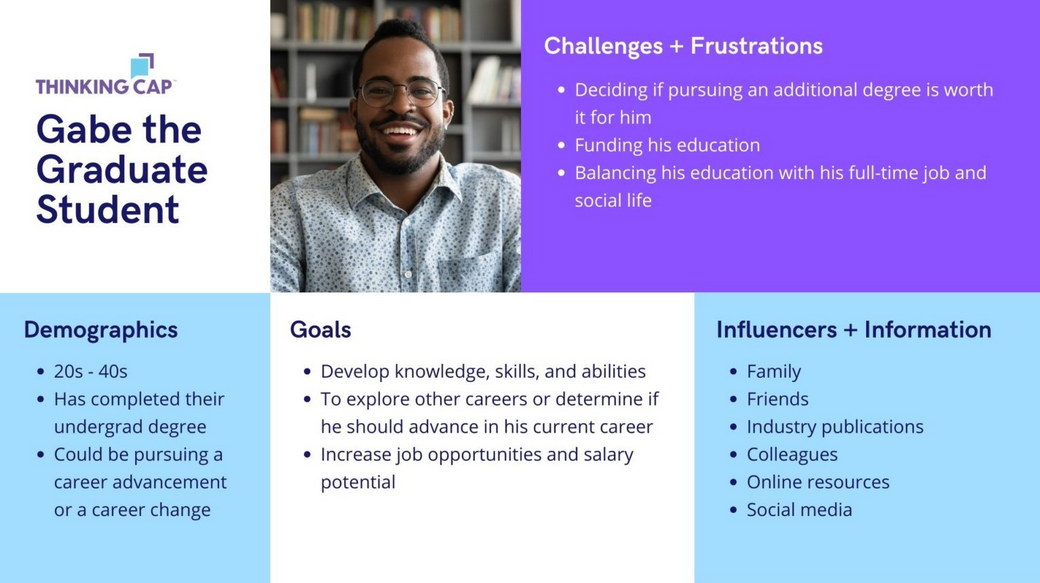
Source: Thinking Cap
Moreover, leveraging insights from alumni experiences and identifying your school’s unique strengths and competitive advantages are all essential ingredients for a more effective enrollment strategy.
With all this valuable information, you can utilize outbound marketing techniques to showcase what sets your school apart and entice prospective students to join your educational journey.
Finally, when it comes to enrollment plans, it’s crucial to recognize that they aren’t rigid documents.
On the contrary, the enrollment plan should evolve and adapt as circumstances change, incorporating valuable feedback and insights you gather along the way.
In conclusion, neglecting to develop a strategic enrollment plan is one of the reasons why your enrollment numbers are down.
You can change this by creating an engaging and tailored enrollment strategy that will set your school on the path to enrollment excellence and bring you many benefits along the way.
Focusing More on Features Than Value
Another significant reason why schools experience low enrollment numbers is the tendency to focus more on features rather than value.
Many educational institutions adopt a school-centric approach, emphasizing their superior facilities, extracurricular activities, or academic programs compared to their competitors.
However, they often fail to communicate the value and benefits that their school can bring to students and parents.
Simply put, they are not student-oriented enough.
On the other hand, today’s parents and students seek schools that offer a holistic and impactful educational experience, one that contributes to personal growth, character development, and future success.
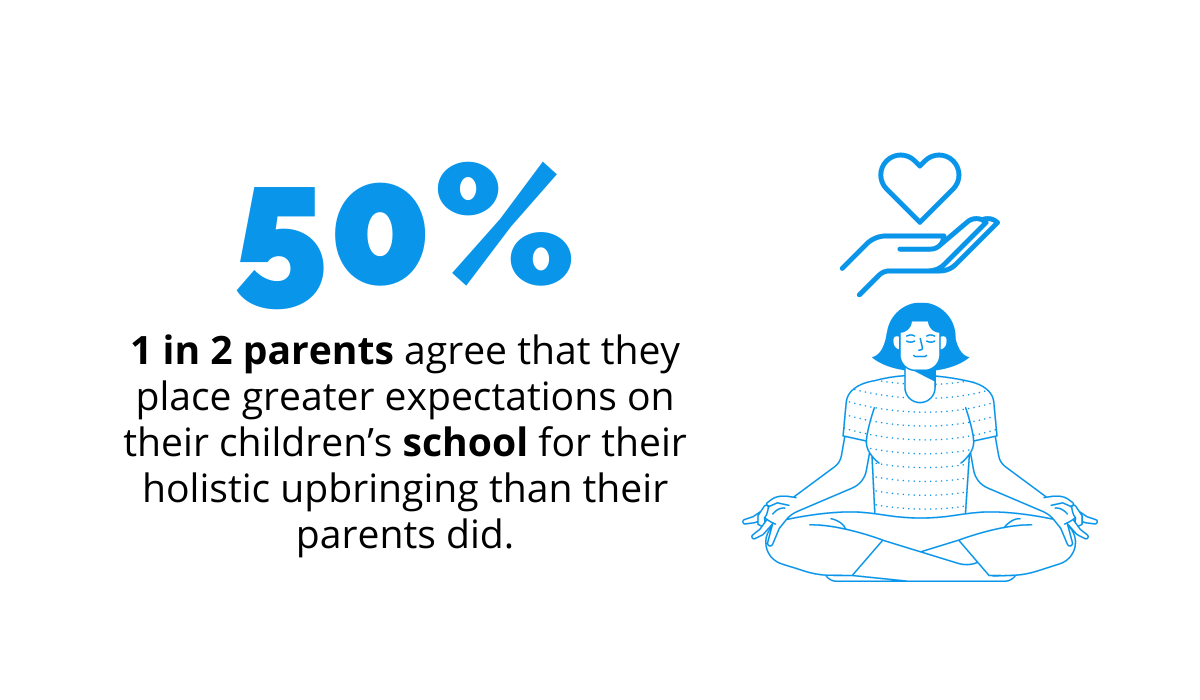
Illustration: Regpack / Data: McCrindle
So, by neglecting to emphasize the value they provide, schools miss the opportunity to connect with families on a deeper level.
One effective way of addressing this issue is creating a compelling value proposition that clearly communicates what the school stands for and how it can positively impact students’ lives.
This concise statement should resonate with the target audience and address their specific needs, aspirations, and concerns.
One school that exemplifies this approach is Landon, a private school for boys in Maryland.

Source: Landon
Landon’s value proposition captured in the photo above is both concise and emotionally engaging. It directly addresses parents and validates their most profound feelings.
The opening statement on the school’s web page resonates deeply, evoking a strong sense of reassurance for parents, knowing that their sons will be entrusted to capable hands.
Moreover, Landon effectively combines their value proposition with further explanations of the benefits they offer, differentiating it from other institutions.

Source: Landon
They highlight their status as a national leader in boys’ college preparatory education, emphasizing expert teachers, advanced curricula, and high expectations to prepare students for future success.
In addition to crafting a strong value proposition, schools should support their claims with evidence.
This can be achieved through infographics, current students or alumni testimonials, and detailed information about the school’s traditions, size, and achievements.
For example, Landon has decided to include alumni testimonials on their web page demonstrating their educational approach’s impact.

Source: Landon
A testimonial like this is tangible proof of the school’s commitment to delivering value, and based on it, potential families can gain trust and confidence in their decision to choose that institution.
And who can advocate better for your school than those who were actually enrolled once and whose characters were shaped by your values and principles?
In conclusion, your school can forge stronger connections with parents and students by shifting focus from features to the value you provide.
This change in approach is essential for boosting enrollment numbers and fostering a thriving student community.
Using Outbound Instead of Inbound Marketing
One last factor that can significantly impact your enrollment numbers is the inadequate use of marketing strategies.
A common issue is relying solely on outbound marketing methods, which may not yield desired results for schools.
However, by adopting an inbound marketing approach, you can achieve more effective and sustainable outcomes.
Inbound marketing is all about understanding and addressing the specific concerns of your target audience—students and their parents—throughout the enrollment process.
You can build trust, credibility, and connections with parents and students by being there every step of the way and ultimately ensuring they choose your school to enroll in.
This audience-centric focus is the essence of inbound marketing.
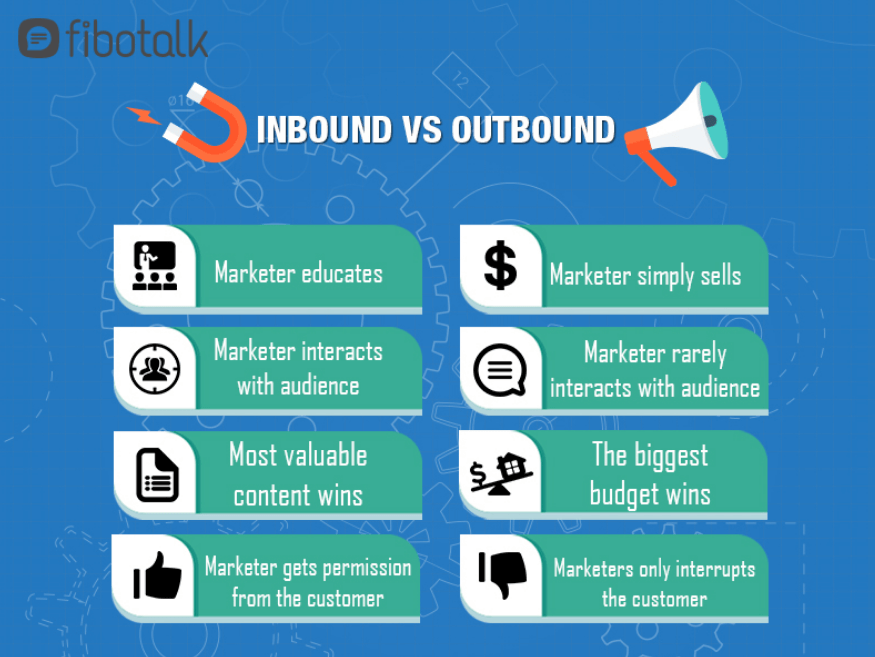
Source: Fibotalk
What’s more, studies have shown that inbound marketing can generate leads at a significantly lower cost than traditional outbound methods—approximately 62% less per lead.
This cost efficiency is particularly advantageous for schools operating on a budget.
So, what is inbound marketing about?
It revolves around creating compelling and informative content across various channels, such as blogging, video marketing, email campaigns, and social media posts.
Why is this meaningful in enrollments and admissions?
Because by consistently delivering valuable content, you can position your institution as a reliable source of information and support to students throughout the enrollment process.
Let’s break down the three stages of the enrollment journey to see how inbound marketing can make a difference for your school and your prospective students.
As a starting point, it is crucial to understand the challenges and desires of your target audience, including students and their parents.
In one of the previous sections, we discussed the creation of student personas as a means to gain these insights.
Once armed with this knowledge, you can raise awareness and generate interest by sharing informative blog articles that highlight program benefits, showcase alumni success stories, and address frequently asked questions.
For instance, the University of Waterloo in Canada effectively addressed common queries through YouTube videos, providing an easy and convenient way for students to find answers.
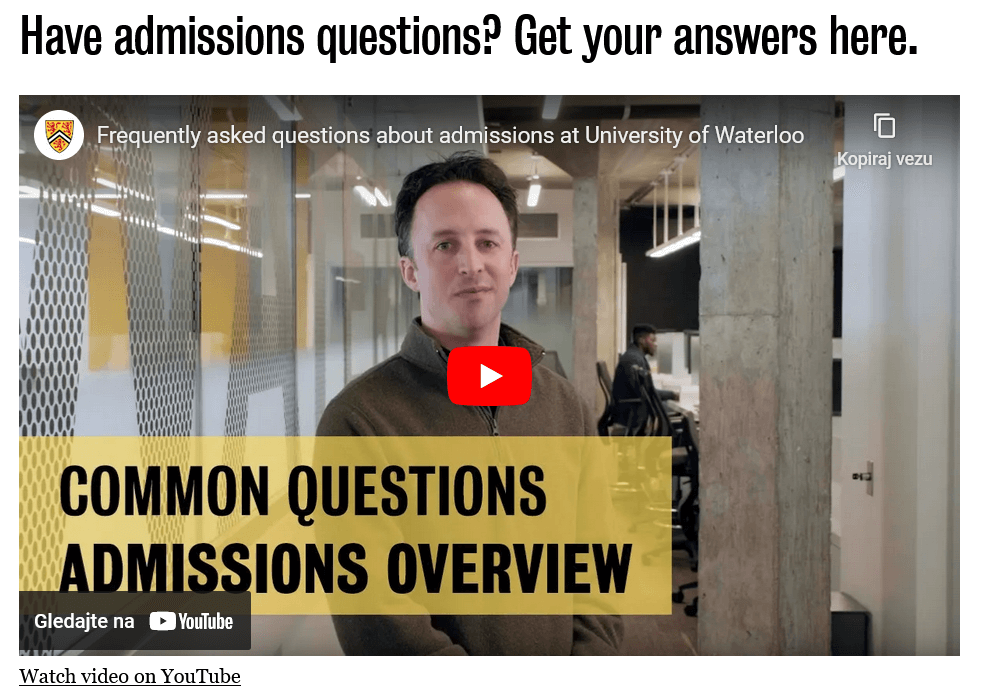
Source: University of Waterloo
As students and parents progress to the consideration stage, they seek more in-depth information.
At this point, you can provide comprehensive program overviews, virtual campus tours, and testimonials from current students.
Establishing connections through social media platforms and hosting webinars can further address concerns and solidify relationships.
For example, the OB Montessori School in the Philippines created an engaging Instagram reel featuring a testimonial from a satisfied parent.
Such authentic experiences have a higher chance of influencing other parents to choose the school than repetitive and dry advertisements.
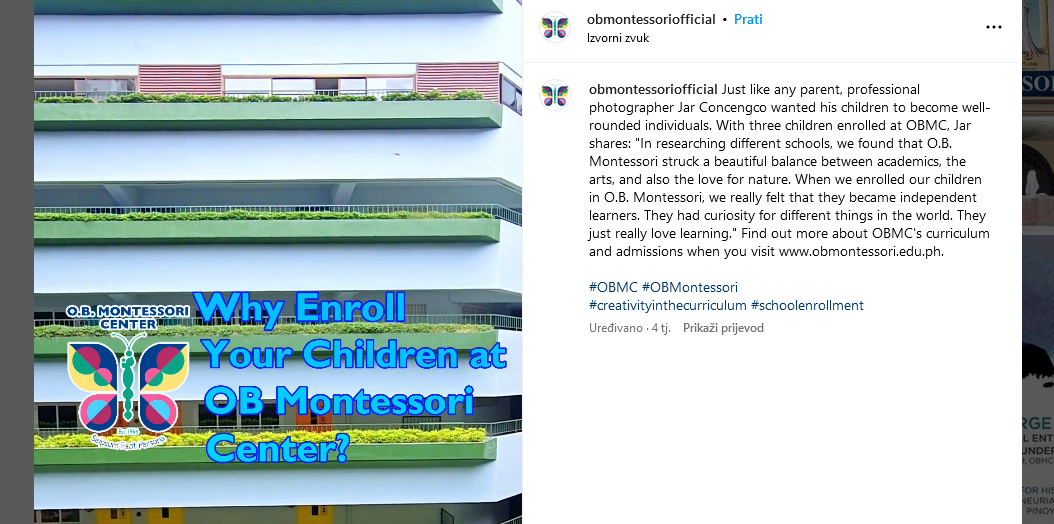
Source: OB Montessori on Instagram
Finally, at the decision stage, students and parents are ready to take action.
That’s why you must provide clear and concise information about the application process, financial aid options, and deadlines.
Personalized email campaigns and one-on-one interactions with admissions representatives can come in handy to guide students through the final steps of enrollment.
In conclusion, effective inbound marketing strategies focus on providing the solutions actively sought by your target audience.
By delivering engaging content and employing a tailored approach, you can connect with prospective students, guide them throughout their decision-making journey, and ultimately achieve your enrollment goals.
Conclusion
To boost enrollment numbers and ensure ongoing growth, it’s essential to have the right people in the right positions, such as a strong leader, a capable enrollment director, and a talented marketing team.
In addition, a well-designed enrollment plan, focus on your school’s unique values and benefits for students, and effective promotion through engaging content is the key to success.
If you implement the strategies we’ve described here, you can expect a significant increase in enrollment and long-term prosperity for your institution.



















